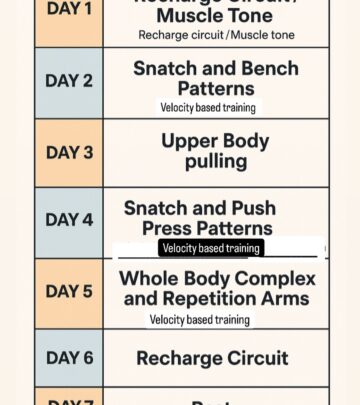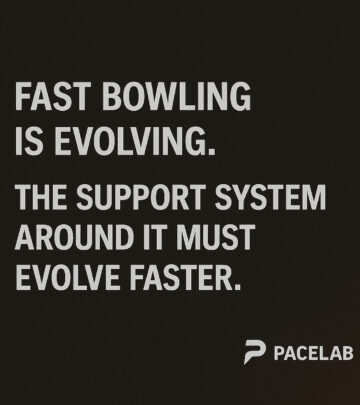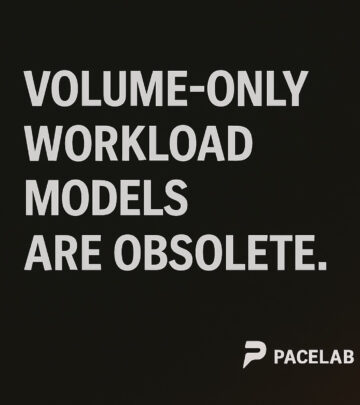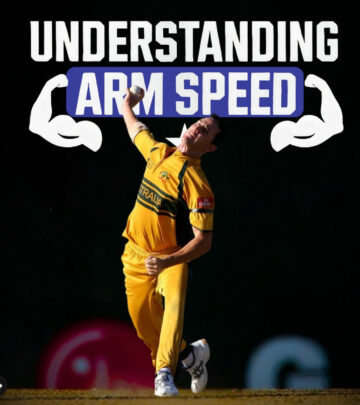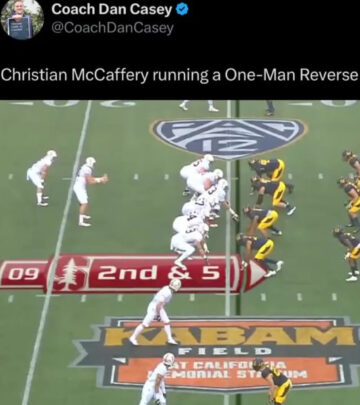Fast Bowling Revolution: The PaceLab System Blueprint
Cricket Meets Science: Redefining Fast Bowling Through Precision, Strength & Biomechanics
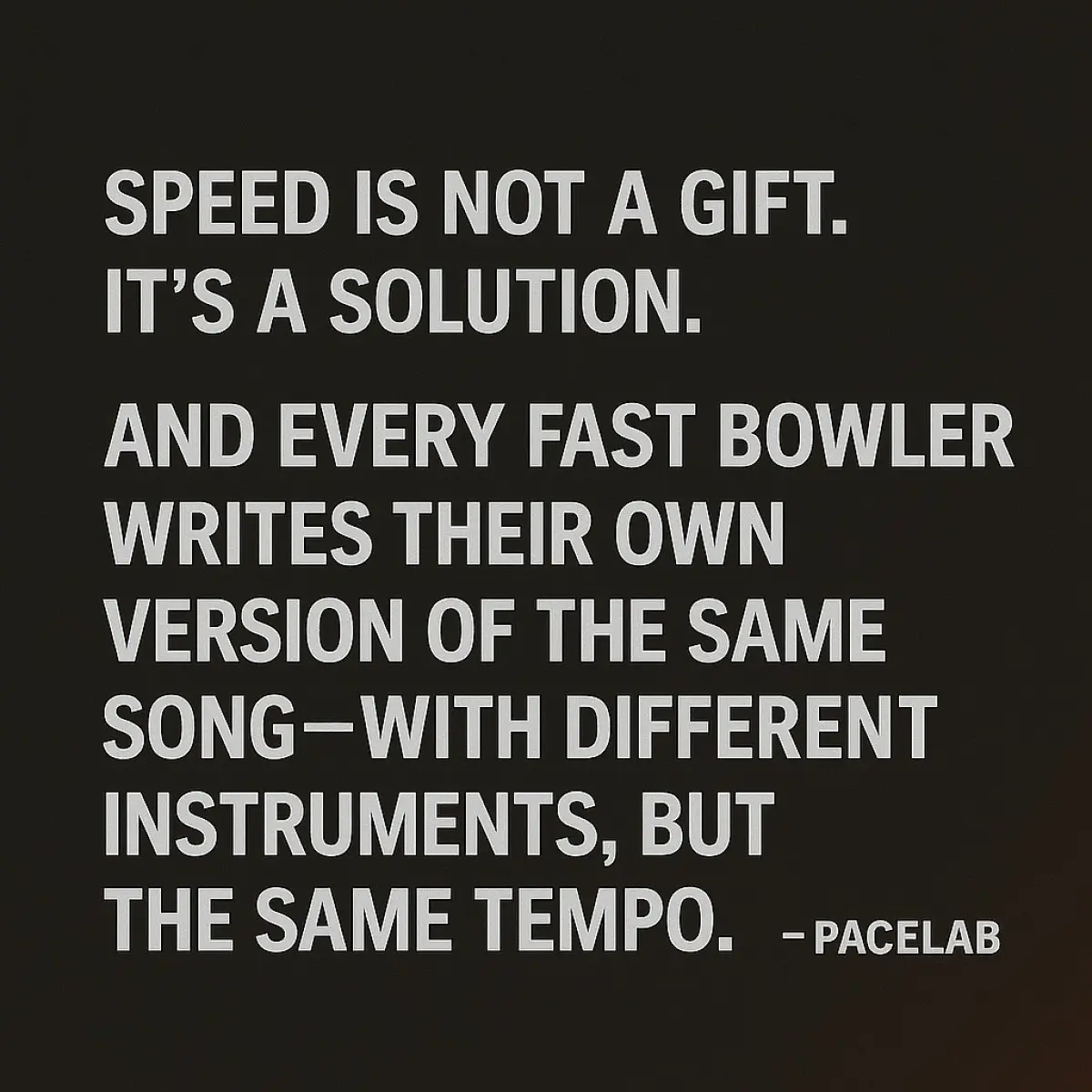
Image: Instagram
Steffan Jones, a noted name in cricket coaching and innovation, is setting the stage for a new era in fast bowling development with the PaceLab System Blueprint. At the heart of this approach is a method that replaces vague coaching cues with a precise, science-backed framework. The concept is simple yet groundbreaking: understanding that bowling speed is not a mystery, but rather the product of biomechanically efficient, energy-transferring sequences.
Key Determinants Of Fast Bowling: The Pacelab System Blueprint
The PaceLab Training System delineates fast bowling development into three key layers. First, it establishes the universal principles that all effective actions share. Second, it recognizes the individual peculiarities that differentiate each player. Finally, it elucidates the mechanisms that link these two layers – including descriptors, attractors, and coordination. These elements form an integral part of the 10 PaceLab Principles that guide fast bowling performance. Emphasizing knowledge over anecdote, the system insists that true speed is built on scientific understanding and individualized execution rather than on storytelling or traditional coaching lore.
Drawing from extensive data and biomechanical research, the system explains that a bowler’s pace is determined by training the internal systems that drive the movement. This is a departure from coaching methods that rely solely on observational cues and muscle memory. Instead, PaceLab’s approach is designed to refine the whole-body ballistic movement through targeted force production and sequencing.
Universal Principles And Individual Peculiarities
Central to the system are two interlocking concepts. The first is the notion that there are universal principles on which every fast bowling action is built. These are the common elements that exist regardless of a bowler’s unique style. The second concept acknowledges that each bowler has individual peculiarities – differences in movement, timing, and energy transfer that must be accommodated for maximum performance. By bridging these layers through clear descriptors and coordination metrics, the PaceLab blueprint allows both coaches and players to transition from generic training to a method that is tailored to individual needs.
Steffan Jones, whose work in fast bowling coaching has turned heads across the cricket community, reinforces this method. In previous Instagram posts, he has underscored that knowledge forms the foundation of progression. One memorable caption read, “Only one system exists based on knowledge. The greatest impact in fast bowling coaching in a generation. Think differently. Trust the process. Respect the principles.” This sentiment encapsulates the philosophy behind the PaceLab system: real change comes from understanding the underlying mechanics of motion rather than merely replicating actions.
Science, Not Storytelling
A common pitfall in fast bowling coaching is the reliance on storytelling and anecdotal experience to justify technique. However, according to the PaceLab System, speed must be developed with a systematic approach that emphasizes neuromuscular mechanics over surface-level cues. As one of Jones’s posts explains, “Technique is what you see. Mechanics are what you move with.” This observation drives home the point that while one can copy the visual aspects of a bowler’s action, only by training the muscles and neural pathways can a coach help a player truly replicate and sustain high speed.
The system also addresses the importance of breakdown and sequencing in bowling. For instance, a well-timed run-up and an optimized front foot block are crucial in generating momentum. This method, backed by data gathered through athlete profiling and training camps, reveals that it is not brute strength alone but the mechanical sequencing of the action that propels the ball at high speeds. As noted in the training modules, increasing a bowler’s approach speed ramps up the total momentum, thereby enhancing the elastic energy return from muscles, tendons, and fascia.
Courses tailored to this methodology are slated to expand the impact of this system. Options available include the foundation coaching course scheduled to release in September 2025, Coach Mentorship Global programs, PaceLab academies in the United Kingdom and South Africa, and hybrid programmes in India. These initiatives are designed to make the PaceLab System accessible to both established coaches and emerging talents who are eager to think differently and ground their fast bowling development in scientific knowledge.
What sets the PaceLab approach apart is its steadfast commitment to knowledge-based coaching. By replacing traditional narratives with plenty of data and biomechanical science, it provides a clear, replicable pathway for enhancing performance. Steffan Jones and other proponents of this system emphasize that the greatest gains in bowling speed are achieved when players and coaches work together using principles that have been validated through research and real-world application.
In this new era of fast bowling, the focus is unmistakably on precision and science. It’s a call to the cricket world to move beyond old paradigms and embrace an approach where every movement is analyzed, every action measured, and every improvement backed by data. This evolution of coaching promises not only to boost speed and efficiency but also to reduce injury risks by ensuring that each biomechanical process is optimized for performance.
The PaceLab System Blueprint is more than just a training regimen; it represents a shift toward smarter, science-driven coaching that may well set a new standard in fast bowling development. As the cricketing season approaches and competition intensifies, embracing such innovation could provide the decisive edge required to excel on the international stage.
Read full bio of Joyce



